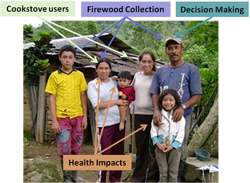News
Forum Accelerates Action To Reduce Exposure To Indoor Air Pollution
April 04 2011
 The fifth Biennial Partnership for Clean Indoor Air Forum was held in Lima, Peru on February 21-25, 2011. The forum aimed to accelerate action to reduce exposure to indoor air pollution from cooking and heating practices in developing countries.
The fifth Biennial Partnership for Clean Indoor Air Forum was held in Lima, Peru on February 21-25, 2011. The forum aimed to accelerate action to reduce exposure to indoor air pollution from cooking and heating practices in developing countries. A representative from the World Bank’s Latin American and Caribbean Energy Team presented findings of an Energy Sector Management Assistance Program (ESMAP) financed study on Central America’s Improved Cookstoves Toolkit to approximately 350 partners from 150 countries involved in the cleaner cooking community. Adoption and impact indicators of the cookstove toolkit were also outlined. In addition, Peru’s first lady, Pilar Nores de Garcia, presented Peru’s cookstove program program called “Medio Millon de Cocinas Mejoradas. Por un Peru sin Humo.”
The Forum included discussions on: (i) national stove programs, highlighting Peru’s program; (ii) stoves for humanitarian crisis, which included cases such as Haiti; (iii) meeting community needs; (iv) the latest developments in technologies, fuels, manufacturing strategies, and testing; and (v) carbon finance opportunities. It also included a site visit to local communities in the Sierra that are using on-site improved cookstoves. Several World Bank staff and client countries’ representatives participated in the Forum.
The Central America Improved Cookstoves Toolkit aims to provide a methodology that incorporates technical, socio-cultural and financial parameters for successful improved cookstoves programs. The toolkit also has a specific focus on the gender dimension of improved cookstoves, and considers the needs of men and women during its design, dissemination and use.
The World Bank team received useful feedback on the study from relevant cookstove stakeholders such as NGOs, certification centers, and potential carbon finance firms. There was wide support for the need to incorporate the socio-cultural dimension, including the gender dimension, as part of the framework. Key questions raised included the need to carry out more independent adoption and impact assessments of improved cookstoves, the reasons for the use of on-site improved cookstoves in Central America, and the relevance of market development for improved cookstoves. The study is expected to be completed by the end of this year.
